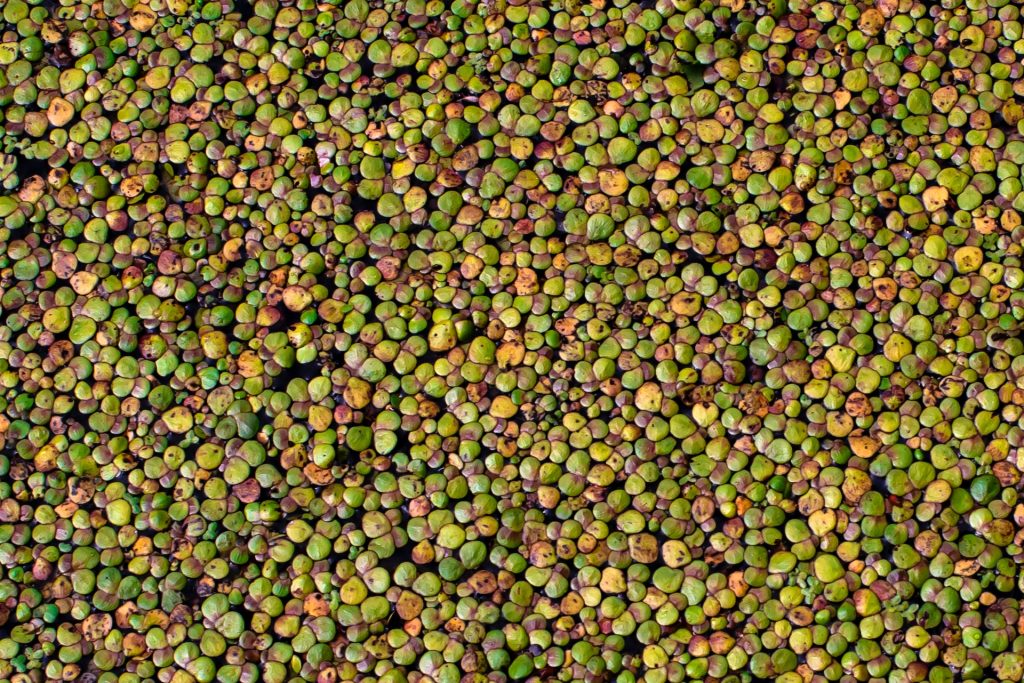
Negative Effects of
Duckweed
Duckweed, a small and seemingly innocuous aquatic plant, can have profound effects on the ecological balance of lagoons and similar water bodies. While it serves beneficial purposes in some contexts, its uncontrolled growth presents several ecological challenges. Understanding these impacts is crucial for effective waterbody management and maintaining ecological health. This page delves into the various ways duckweed can influence lagoon ecosystems, highlighting the need for balanced growth and management of this aquatic plant. Though, these negative effects are
Oxygen Depletion
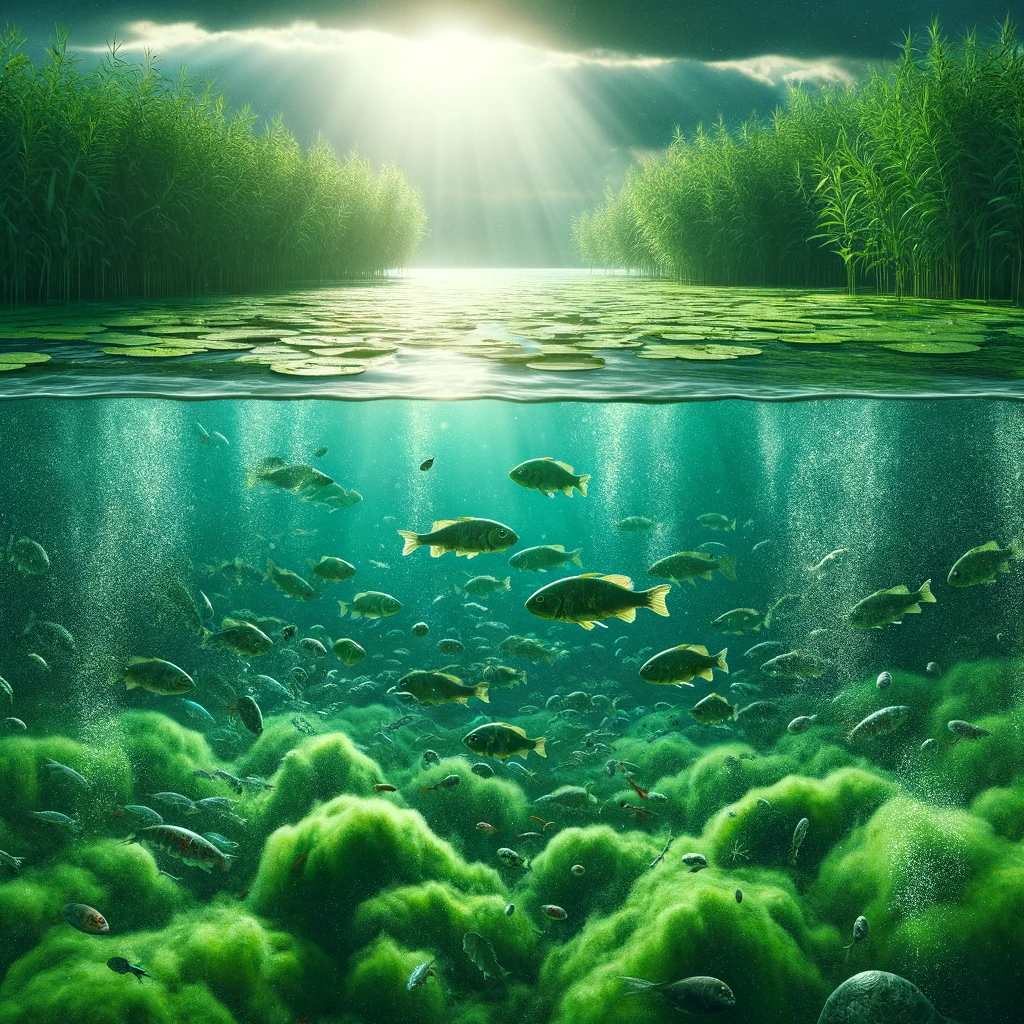
Dense duckweed mats significantly affect the oxygen dynamics in a lagoon. By blocking sunlight, these mats inhibit photosynthesis in submerged aquatic plants, which are essential for oxygen production. This reduction in photosynthesis leads to a decrease in dissolved oxygen levels, vital for aquatic life. Fish, amphibians, and beneficial microorganisms can suffer in such low-oxygen conditions. This effect can be particularly severe during the night when plants consume oxygen for respiration, further depleting the already limited oxygen supply.
Nutrient Removal
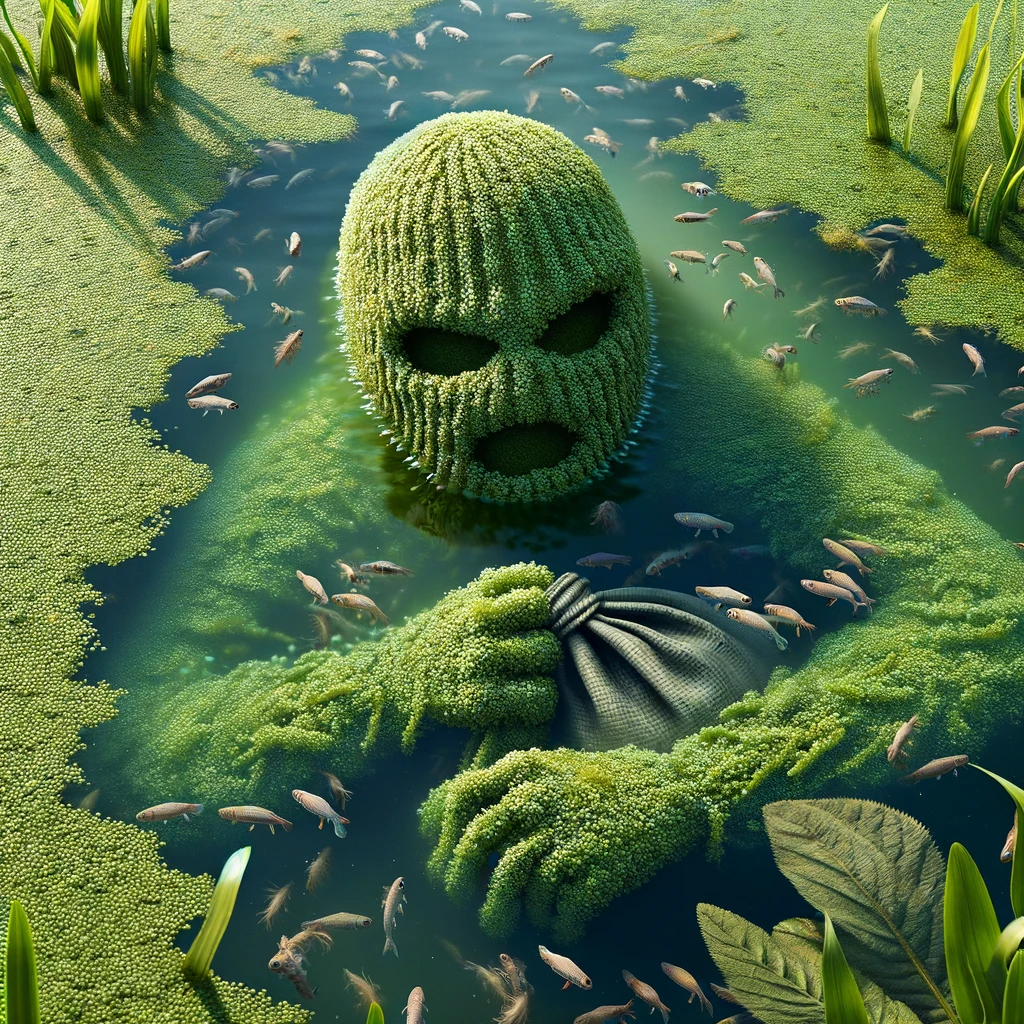
Duckweed’s ability to absorb nutrients like nitrogen and phosphorus is a double-edged sword. While beneficial in moderation, excessive growth due to nutrient-rich conditions can lead to an imbalance. When duckweed consumes too many nutrients, other aquatic plants and algae are starved, disrupting the ecosystem’s balance. This imbalance can affect the growth and reproduction of various aquatic species, leading to long-term changes in the ecosystem’s structure and function. This can significantly affect the dissolved oxygen necessary by the aerobic bacteria in the degradation of the organic matter.
Algal Blooms
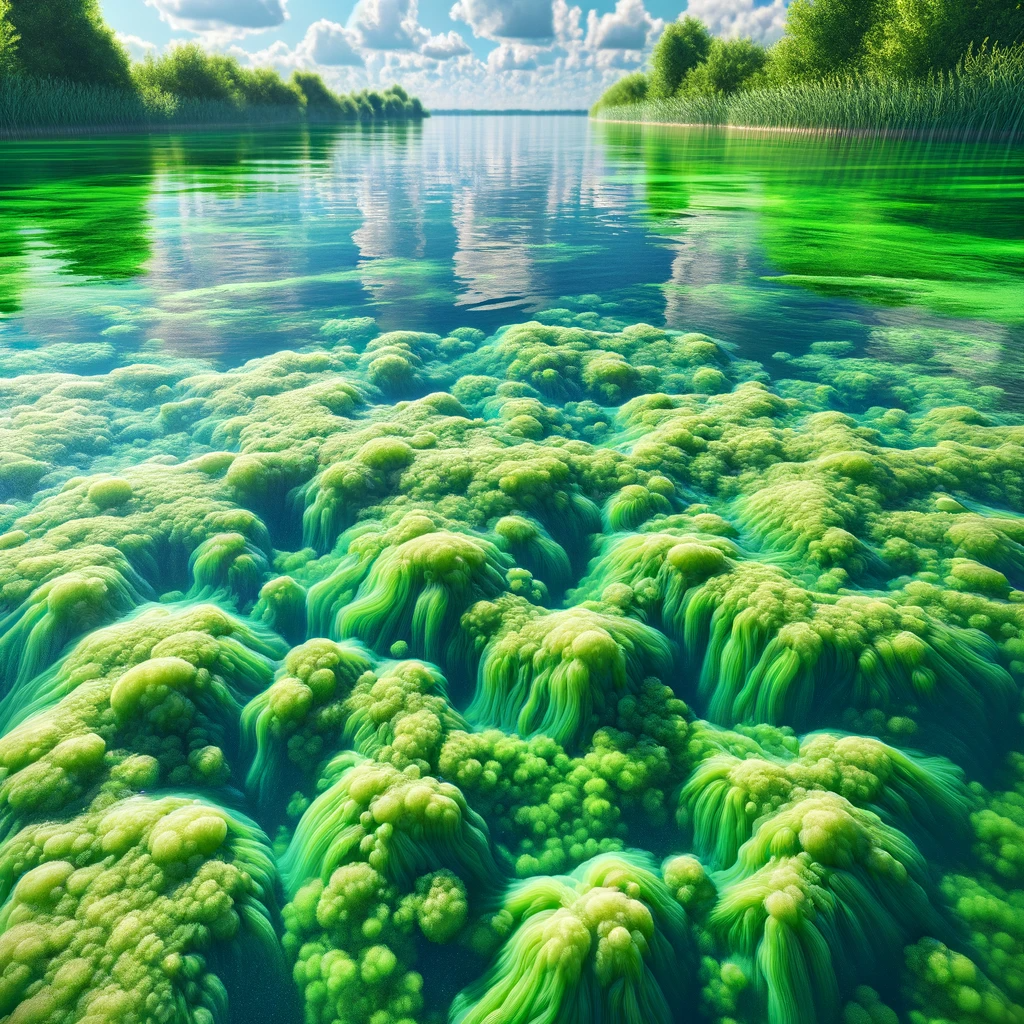
The environment under dense duckweed mats is conducive to algae growth. These conditions can trigger algal blooms, which often result in the creation of hypoxic or anoxic “dead zones.” The decomposition of these algal blooms further depletes oxygen in the water, causing significant harm to aquatic life, including mass fish kills. The blooms can also release toxins harmful to wildlife and humans, posing a threat to the health of the entire ecosystem.
Water Quality

Duckweed mats restrict water circulation, leading to stagnant conditions that can worsen water quality. Stagnant water becomes a breeding ground for pathogens and insects and can accumulate a high concentration of pollutants and organic matter. This deterioration in water quality can harm aquatic life, lead to unpleasant odors, and create unsightly water conditions and poor effluent quality, causing possible permit violations.
Recreational Activities

The proliferation of duckweed can significantly hinder boating in lagoons. Its thick mats can make navigating lagoons very difficult which can pose safety risks. This can severely negatively affect work output that needs to be completed in the lagoon.
Decreased Biodiversity
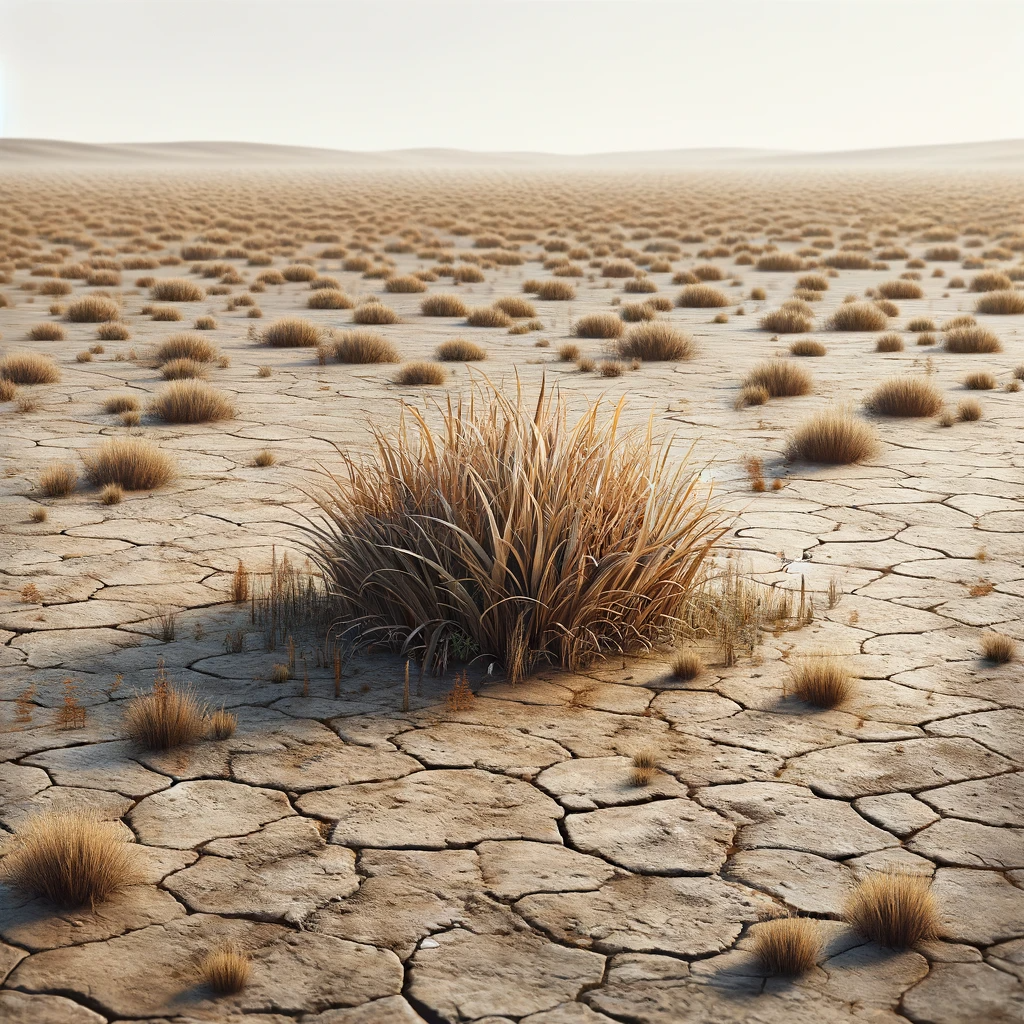
The dominance of duckweed in a lagoon can lead to a decrease in biodiversity. Its rapid growth and dense coverage can outcompete native aquatic plants, leading to a loss of species diversity. This reduction in plant diversity affects the entire food web, from small invertebrates to larger aquatic animals. The loss of native plant species can have cascading effects on the ecosystem, reducing the variety of habitats and food sources available to aquatic and semi-aquatic species.
Conclusion
In summary, the growth of duckweed in lagoons, while beneficial in controlled amounts, can lead to a range of ecological challenges when it becomes excessive. These include oxygen depletion, nutrient imbalances, the promotion of algal blooms, degradation of water quality, hindrance to recreational activities, and a decrease in biodiversity. These impacts underscore the importance of monitoring and managing duckweed growth to preserve the ecological balance and health of lagoons. Effective management strategies can mitigate these negative impacts, ensuring that duckweed remains an asset rather than a liability in aquatic ecosystems.